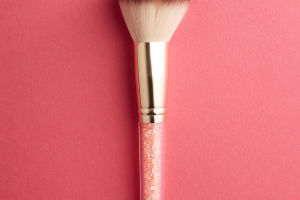Hi, Lykkers! Choosing the right toothbrush might seem simple, but with the variety of options available today, it's easy to get overwhelmed.
Let's break down everything you need to know to pick the perfect toothbrush that will make your teeth sparkle and your dentist proud.
1. Soft Bristles Are Your Best Friend
The most important feature to consider when choosing a toothbrush is the bristle type. Dentists overwhelmingly recommend soft bristles. Why? Because they're gentle on your gums and effective at removing plaque and debris. Medium and hard bristles might seem like they'd clean better, but they can actually wear down enamel and irritate your gums. So, keep it gentle and go for soft.
2. Size Does Matter
When it comes to toothbrushes, size really does matter. You want a toothbrush head that comfortably fits in your mouth and can easily reach all areas, including those tricky back teeth. For most adults, a head that's about an inch tall and half an inch wide will do the trick. However, if you have a smaller mouth, consider a compact or smaller head size. It's all about finding what feels comfortable for you.
3. Handle with Care
The handle of your toothbrush might not seem like a big deal, but comfort and grip can make a difference in your brushing routine. Look for a toothbrush with an ergonomic handle that's easy to hold, especially if you have arthritis or grip issues. A non-slip grip will give you better control, helping you to reach every nook and cranny of your teeth and gums.
4. Manual vs. Electric: The Great Debate
Choosing between a manual and an electric toothbrush is largely a matter of personal preference. Manual toothbrushes are inexpensive, easy to find, and can do a great job when used properly. On the other hand, electric toothbrushes are praised for their efficiency in removing plaque and reducing gingivitis, and they're often easier to use for those with limited mobility. Plus, they often come with timers to ensure you're brushing long enough. If you're someone who needs a little extra help staying on top of your brushing game, an electric toothbrush might be worth the investment.
5. Check for the ADA Seal
When browsing for a new toothbrush, look for the American Dental Association (ADA) Seal of Acceptance. This seal means the toothbrush has been tested for safety and effectiveness, ensuring it will do a good job keeping your pearly whites clean.
6. Features and Gadgets
Toothbrushes today come with all sorts of bells and whistles. Some have tongue cleaners, others have angled bristles for better reach, and some electric models even connect to your phone to track your brushing habits. While these features can be fun and potentially beneficial, they're not necessary for effective brushing. Focus on what you feel would genuinely improve your brushing experience.
7. Replace Regularly
A crucial part of maintaining good oral hygiene is replacing your toothbrush regularly. Dentists recommend getting a new toothbrush every three to four months or sooner if the bristles become frayed. A worn-out toothbrush isn't as effective at cleaning your teeth, so make sure you're using a fresh one to keep your mouth healthy.
8. Special Considerations
If you have specific dental issues, such as braces, gum disease, or sensitive teeth, consult your dentist for recommendations tailored to your needs. They can provide guidance on which toothbrush features are most important for your situation, ensuring you're getting the best possible care.
9. Post-Brushing Routine
Once you've chosen the perfect toothbrush, it's important to pair it with a good brushing routine. Brush for two minutes twice a day, using gentle, circular motions. Don't forget to floss daily and visit your dentist regularly for check-ups and cleanings. With the right toothbrush and routine, you'll be well on your way to a healthy, happy smile.
Choosing the right toothbrush might take a little thought, but the benefits of good oral hygiene are well worth the effort. With these tips in mind, you're now equipped to make an informed decision and keep your teeth sparkling clean. Happy brushing!


